The shape of a spoken phrase in Spanish
« previous post | next post »
Or maybe in Chilean Spanish; more specifically in the Audible audiobook version of Isabel Allende's La Casa de los Espiritus:
The number of phrases averaged in those plots:
| Word Count | # of Phrases |
| 1 | 695 |
| 2 | 2,772 |
| 3 | 6,021 |
| 4 | 9,756 |
| 5 | 12,620 |
| 6 | 15,030 |
| 7 | 16,170 |
| 8 | 16,048 |
| 9 | 14,238 |
| 10 | 13,020 |
| 11 | 11,429 |
| 12 | 10,980 |
| 13 | 8,437 |
| 14 | 7,028 |
Compare Chinese:
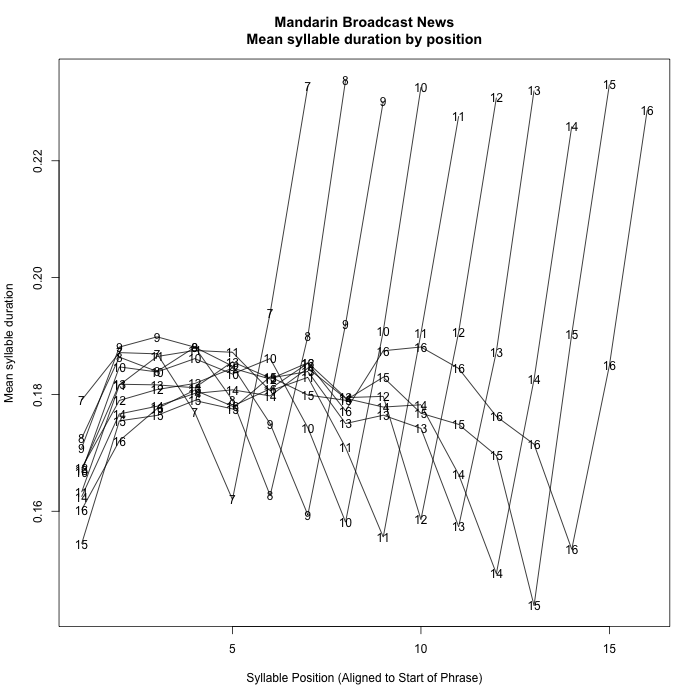 |
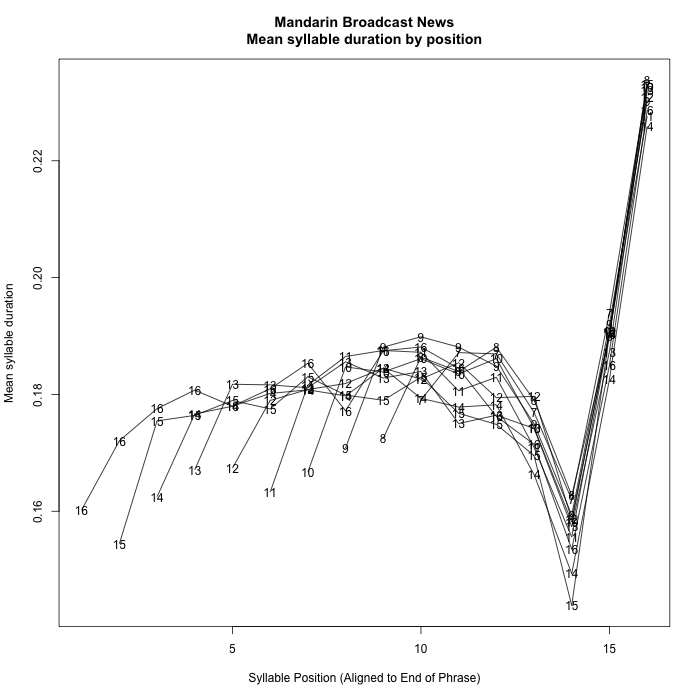 |
And English:
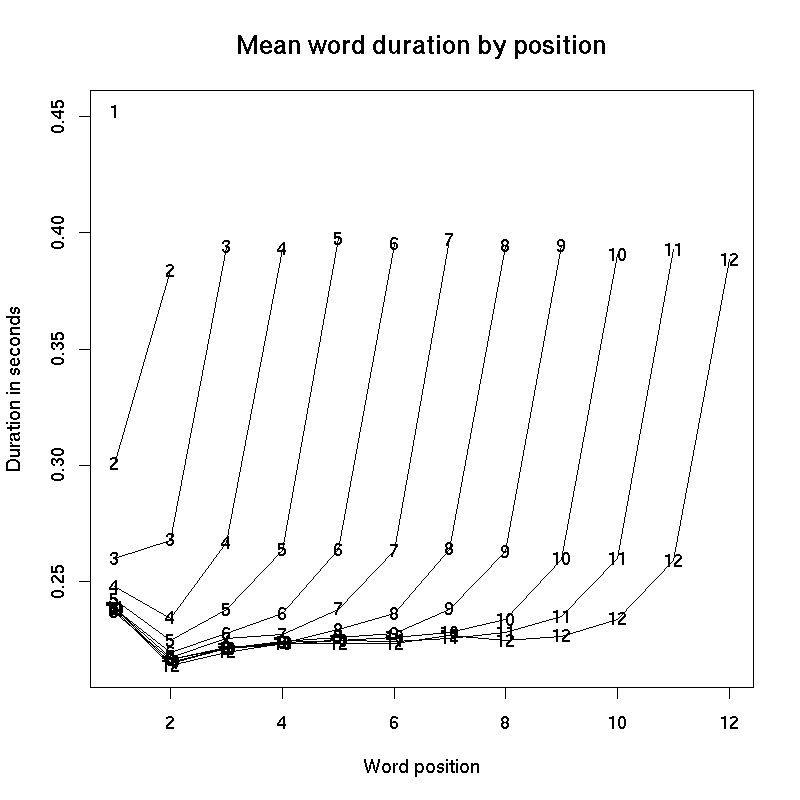 |
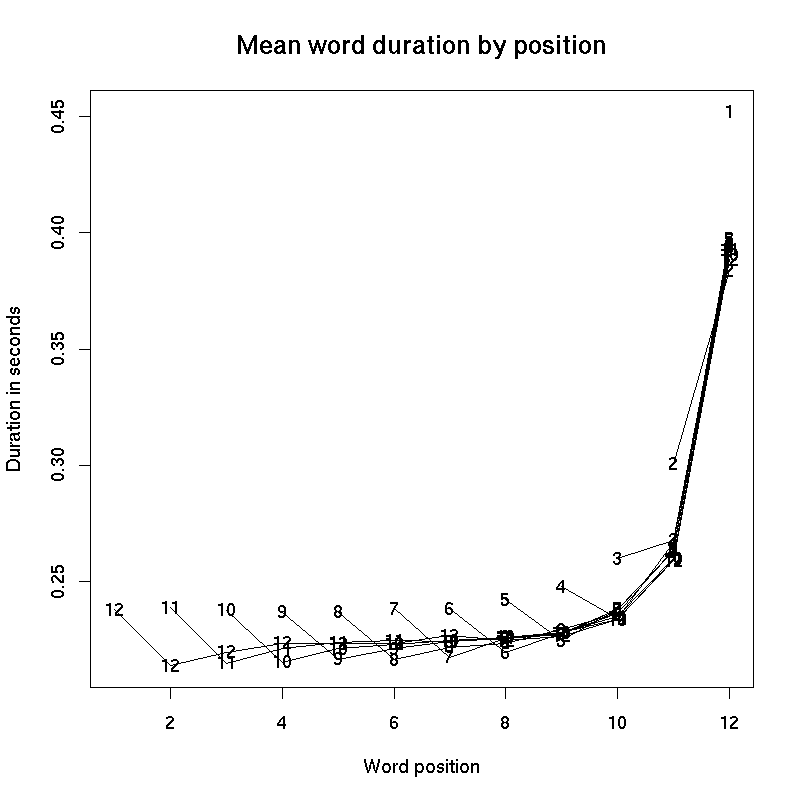 |
[Spanish segmentation by Neville Ryant]
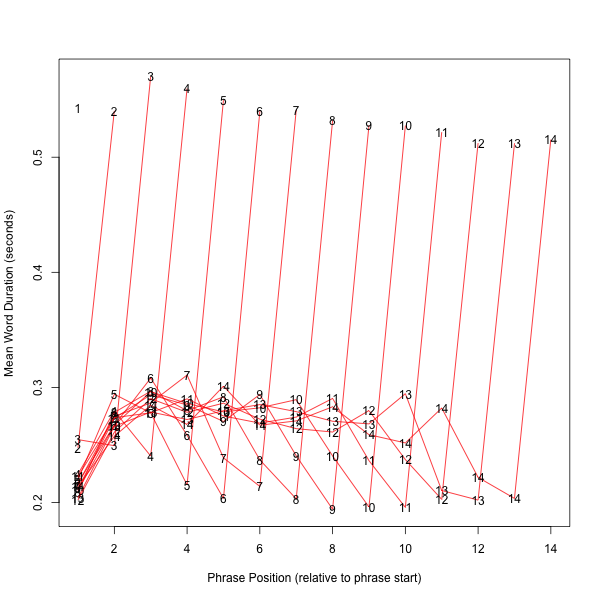
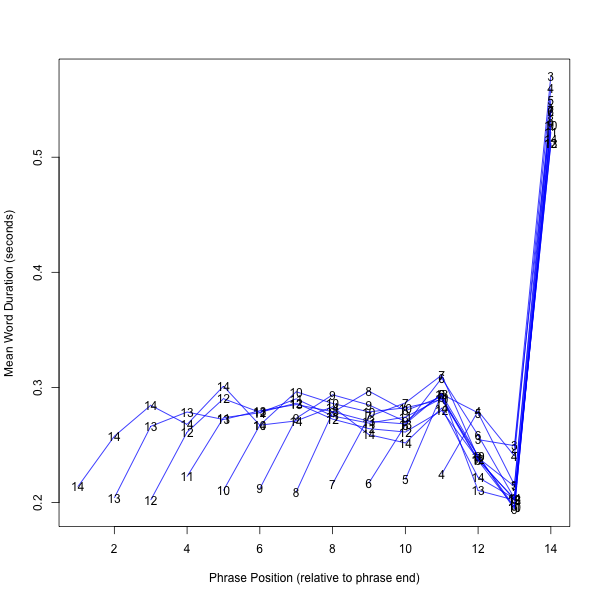
Rubrick said,
May 29, 2015 @ 6:20 pm
The dissimilarity between Spanish/Chinese on the one hand, and English on the other, is striking — but what are we to make of it? Do the first two have very short words/syllables (e.g. "a") which nearly always appear in the penultimate position?
david said,
May 29, 2015 @ 8:25 pm
@Rubrick
Spanish phrases often end in "de xyz" or "de los xyz" or other short words linking a final modifier to a preceding noun as in Cien años de soledad or La Casa de los Espíritus.
D.O. said,
May 29, 2015 @ 9:42 pm
I don't know about Spanish or Chinese, but in English, final word (and penultimate) word lengthening holds on a word-by-word basis as well.
Bob Ladd said,
May 30, 2015 @ 1:54 am
Surely a more plausible source of the similarity between Spanish and Chinese and the differentness of English is the fact that the English data are unscripted conversation while the Spanish and Chinese are read written-style text. That still needs explanation, of course, but as a hypothesis it seems to me to have more potential than something about the languages themselves.
[(myl) This is one of several interesting possibilities — one nice thing about Breakfast Experiments™ of this kind is that you can use them in exploratory mode to find interesting effects, and also in hypothesis-testing mode to check ideas about explanations.]
K Chang said,
May 30, 2015 @ 3:36 am
Que interesante! So they're saying that Spanish phrase word spread shows more similarity to Chinese than English? Wonder if the same analysis can be done for… say, German, Russian, and maybe, something more exotic like Vietnamese or Thai?
Though shouldn't be be trying to compare the SAME BOOKS rather than vastly different media? I'm not sure you can compare a book to broadcast news. And we don't even know what sort of source was the English one drawing from.
[(myl) Yes you do — use the links!]
Breffni said,
May 30, 2015 @ 5:48 pm
It'd be interesting to translate some of the medium-length phrase shapes (6 or 7 words) into morse-style audio to see if there are audible cross-linguistic differences.